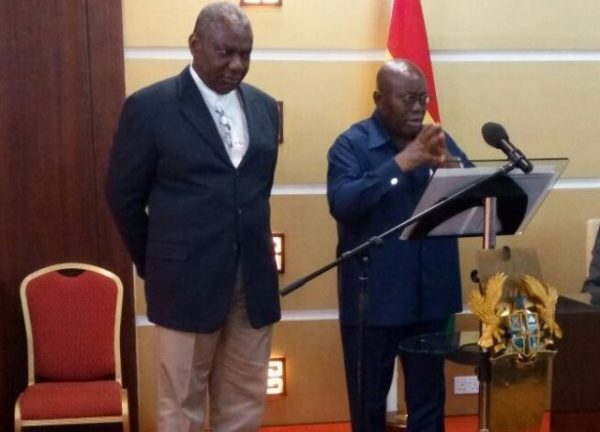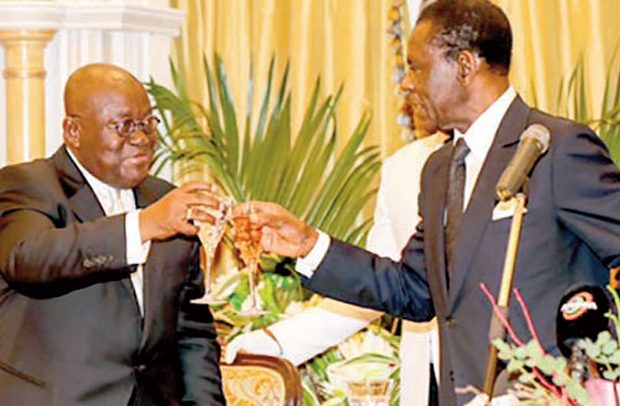When the arrangements are finalised, the Asogli plant will be able to scale up production from about 120 megawatts (MW) to a maximum of 580MW of power.
“It means that Asogli, instead of producing about a 120MW of power, can now scale up to a maximum of 580MW of power,” the Minister of Energy, Boakye Agyarko, has stated.
The infrastructure and regasification processes for Ghana to receive the contracted 150 – 200 million cubic feet of gas from Equatorial Guinea would be completed by the second quarter of 2018, the Energy Minister told The Finder.
“It takes a little while to plan the infrastructure but we are looking at first quarter to second quarter of 2018. In the meanwhile, there is a temporary arrangement that is in the pipeline…to bring the Liquefied Natural Gas to support the Asogli plant,” he noted.
The deal was reached as part of agreements between Ghana and Equatorial Guinea during President Akufo-Addo’s recent three-day state visit to that country.
The Energy Minister was confident the gas agreements reached with Equatorial Guinea would have a huge boost to stability of power generation, transmission and distribution in Ghana.
He indicated further that “for some time, we relied on Nigeria for the supply of gas from the Nigeria Gas Company, transmitted by the West Africa Gas Pipeline Company. The performance of that arrangement has been very unsatisfactory.”
“Out of the 120 million standard cubic feet of gas per day, we receive, on a daily basis, on the best of days, only 30 million standard cubic feet of gas per day, which had a negative impact on our ability to generate power, using gas as its fuel stock”.
According to him, the arrangements to deliver the first gas to Asogli fit perfectly into government’s agenda to power all of its thermal plants with gas.
“We intend to power all our thermal plants with gas”. This, according to him, is because gas has a lot of end uses, including petro- and agro-chemicals.
He explained that the country stands to make huge savings from switching from crude powered plants to gas in generating power.
“Normally, when you change from liquids to gas, you are saving in terms of generation cost; you are saving in the neighbourhood of about 80 per cent of cost…It is our hope that we will be able to come to this very quickly.”
He reiterated that the ideal situation for reducing end user cost of electricity is to switch from liquid to gas. He was confident that in so doing, the lowered cost of production can then pass down to the end users.
“I have made the commitment that any savings that we make in terms of the cost of generating power, we must necessarily transmit wholesale to the end user,” he said.
During the President’s visit, Ghana signed a government-to-government agreement with Equatorial Guinea for the supply of 150 million to 200 million standard cubic feet of gas per day of Liquefied Natural Gas (LNG).
The agreement was signed by Ghana’s Minister for Energy, Mr Boakye Agyarko, and Mr Gabriel Mbaga Obiang Lima, Minister of Mines, Industry and Energy of Equatorial Guinea, and witnessed by President Akufo-Addo and President Teodoro Obiang Nguema Mbasogo.








 (Selorm) |
(Selorm) |  (Nana Kwesi)
(Nana Kwesi)